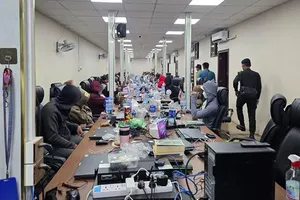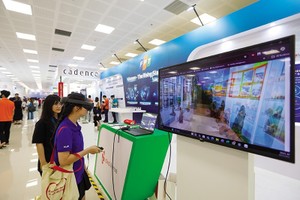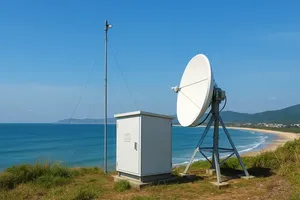Vietnam’s first tsunami warning system was trial tested successfully on May 15 in the central city of Da Nang, in the presence of Deputy Prime Minister Hoang Trung Hai.
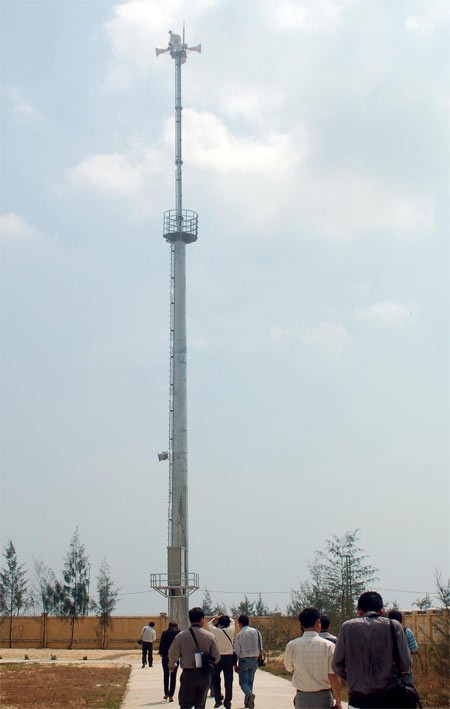
Vietnam’s first tsunami warning station at the Communication Regiment 575 in Lien Chieu District in the central city of Da Nang (Photo: SGGP)
The warning system has 10 alerting stations located along border posts and areas along the coastline of Da Nang in Son Tra, Lien Chieu, Thanh Khe and Ngu Hanh Son districts as well as a communication station and radio broadcasting stations.
The stations are connected to a control center of Viettel Telecom Corporation and to an information interaction system at the Institute of Geophysics, which will raise an alarm warning of any impending tsunami disaster.
The military-owned telecom group Viettel, under a project developed by the Ministry of Agriculture and Rural Development and the Central Committee for Flood and Storm Control (CCFSC) built the warning system.
The tsunami practice drill took place at the barracks of the Communication Regiment 575 in Lien Chieu, based on a scenario that an 8.8 Richter earthquake in the west of the Philippines had caused a tsunami that would strike the coast of Da Nang within two hours.
Soon after receiving tsunami warning information from the Institute of Geophysics, within 10 minutes the alarm system and other alerting devices went off. This was followed with a news broadcast to the people through loudspeakers and via mobile phone messages.
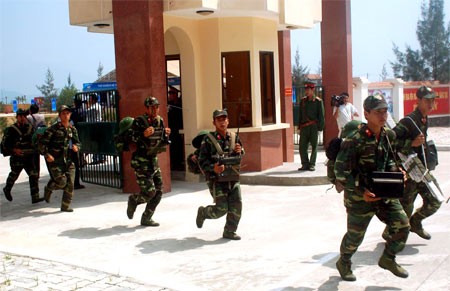
After the trial test, Deputy PM Hai expressed his appreciation of the success of the system.
He said Vietnam has over 3,000 kilometers of coastline, so a tsunami warning system was needed urgently. Hence, the trial construction of the first ten stations in Da Nang was a necessity.
The system would help residents prepare in advance and move to evacuate their premises and go to safer zones as soon as possible.
Mr. Hai asked related units to continue to improve the quality of the devices, the information network and the operation process of the tsunami warning system and combine it with programs on natural disaster prevention to build a comprehensive scheme.
He suggested that the warning system should inform people to return after 1-2 hours after the first tsunami waves came because after an earthquake and tsunami, there are many aftershocks and more tsunami waves may come.
In addition, localities need to plan concrete areas where resident can rush to in event of a tsunami, he added.
Dr. Le Huy Minh from the Institute of Geophysics said so far, there is no concrete evidence to determine that tsunamis could affect the coast of Vietnam. However, the institute’s research shows that the impact of earthquakes under the East Sea and neighboring areas could cause tsunamis in future.
According to scenarios calculated by the Natural Resources and Environment Department, if an 8.3 Richter earthquake occurs in the subduction zone near Manila towards the west of Philippines, it may create a tsunami of 5.2 meters in the central coastal province of Quang Ngai and of 2.1 meters in Nha Trang City in the central coastal province of Khanh Hoa.
According to Dr. Minh, a 9.2 Richter earthquake occurring at the same location may cause a tsunami of 10.6 meters and 5 meters in Quang Ngai and Nha Trang respectively that would take two hours to move to the coast of Vietnam.
Scientifically speaking, an earthquake of over 6.5 Richter scale under the sea can cause a tsunami; hence, a tsunami risk was quite high in the Vietnam sea area and the country must be prepared accordingly.





